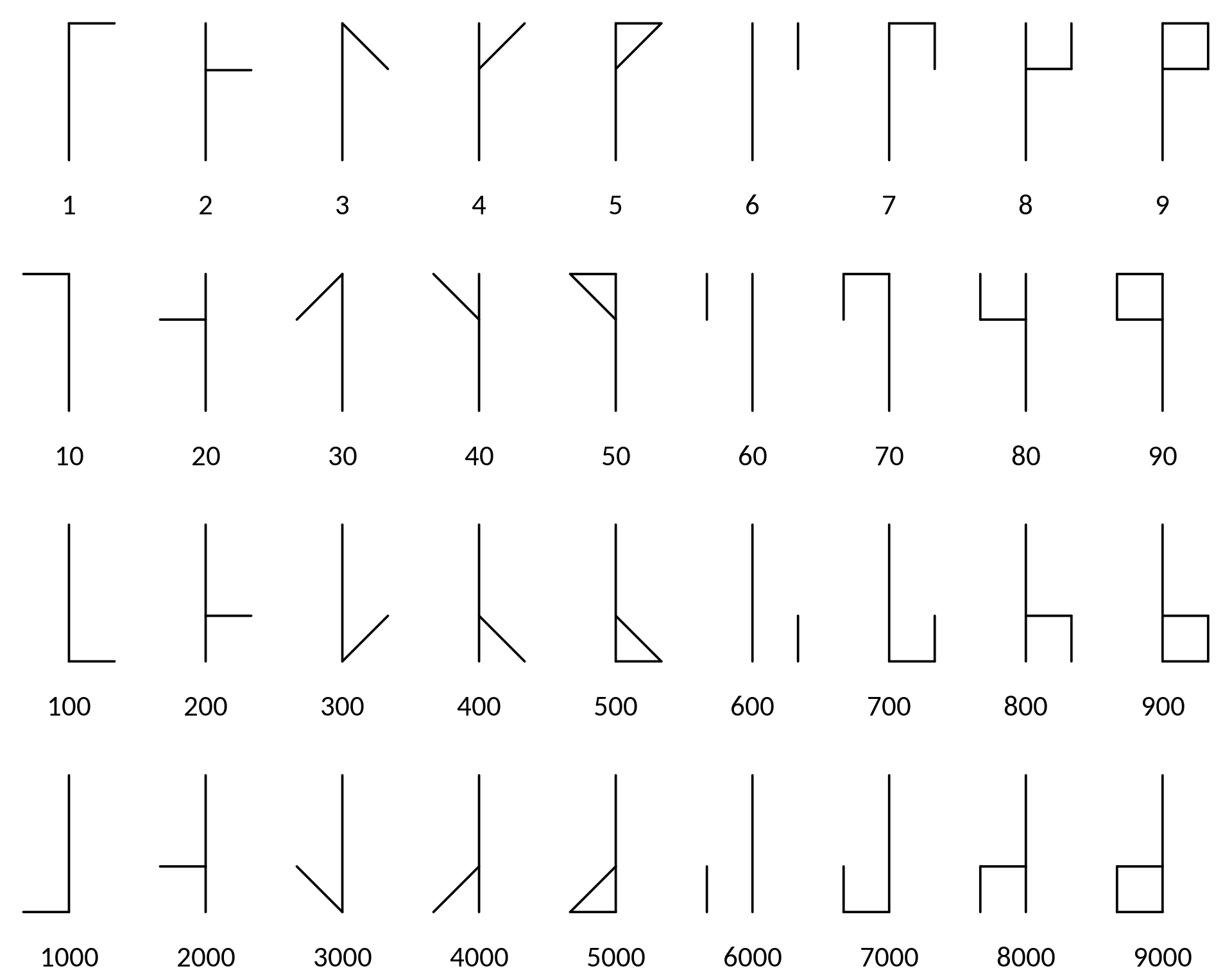TYPE DESIGN INFORMATION PAGE last updated on Fri Nov 14 13:30:12 EST 2025
FONT RECOGNITION VIA FONT MOOSE
|
|
|
|
Cistercian numerals
From wikipedia: The medieval Cistercian numerals, or "ciphers" in nineteenth-century parlance, were developed by the Cistercian monastic order in the early thirteenth century at about the time that Arabic numerals were introduced to northwestern Europe. They are more compact than Arabic or Roman numerals, with a single character able to indicate any integer from 1 to 9,999. Digits are based on a horizontal or vertical stave, with the position of the digit on the stave indicating its place value (units, tens, hundreds or thousands). These digits are compounded on a single stave to indicate more complex numbers. The Cistercians eventually abandoned the system in favor of the Arabic numerals, but marginal use outside the order continued until the early twentieth century. The digits and idea of forming them into ligatures were apparently based on a two-place (1 to 99) numeral system introduced into the Cistercian Order by John of Basingstoke, archdeacon of Leicester. There is a digital typeface that can be used for this, Clairvo. Developed by John Hudson (Tyro Typeworks, Vancouver, Canada) in 2021, it uses clever opentype layout manipulation to construct all 9999 number glyphs using only three handfuls of basic strokes. |
EXTERNAL LINKS |
| | |

file name: Cistercian Number System

file name: John Hudson Clairvo 2021

file name: Cistercian Number System
| | |
|
Luc Devroye ⦿ School of Computer Science ⦿ McGill University Montreal, Canada H3A 2K6 ⦿ lucdevroye@gmail.com ⦿ https://luc.devroye.org ⦿ https://luc.devroye.org/fonts.html |
